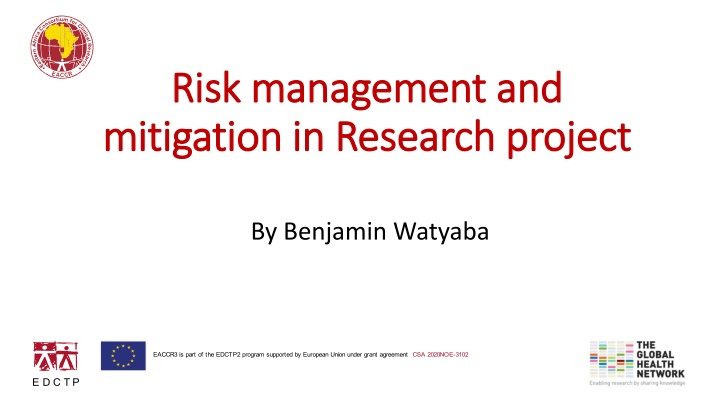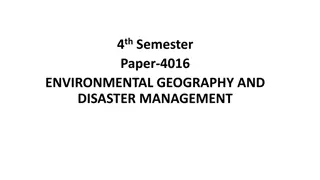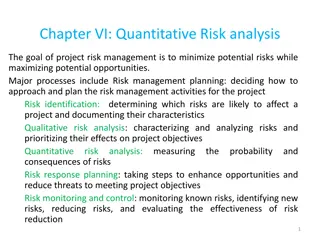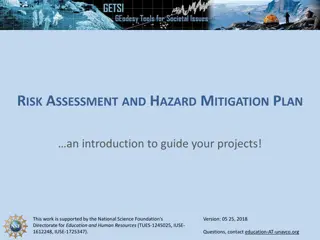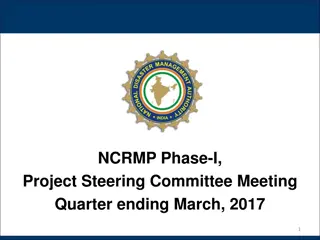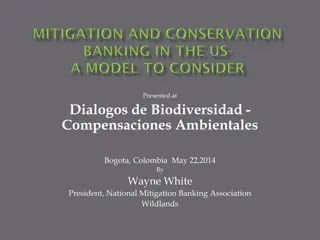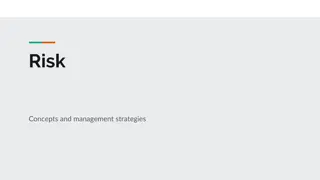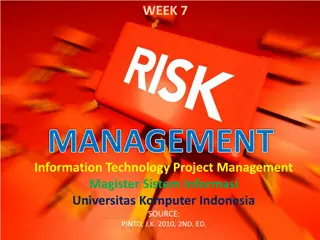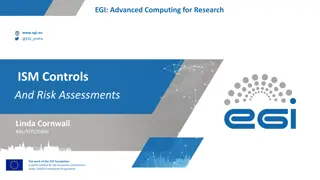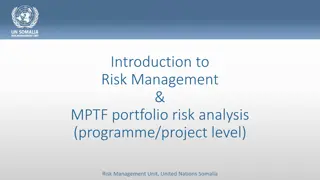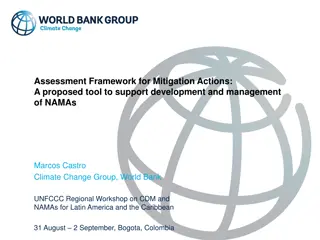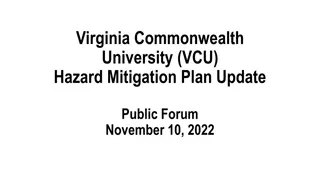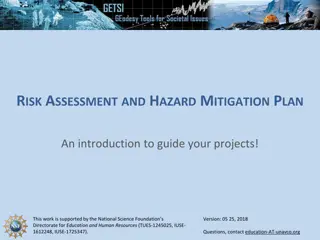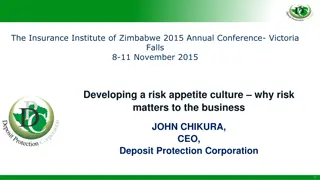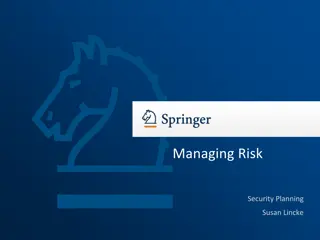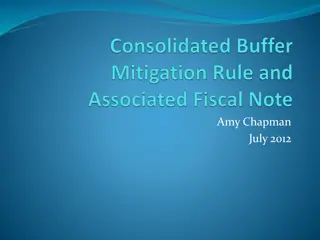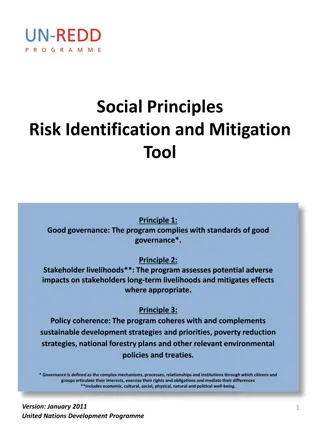Risk Management and Mitigation in Research Project
This article by Benjamin Watyaba focuses on the essential aspects of risk management and mitigation in research projects. It delves into strategies for identifying, assessing, and addressing risks to ensure successful project execution. The importance of effective risk management practices and their impact on project outcomes are highlighted, offering valuable insights for researchers and project managers seeking to enhance project success rates.
Download Presentation

Please find below an Image/Link to download the presentation.
The content on the website is provided AS IS for your information and personal use only. It may not be sold, licensed, or shared on other websites without obtaining consent from the author.If you encounter any issues during the download, it is possible that the publisher has removed the file from their server.
You are allowed to download the files provided on this website for personal or commercial use, subject to the condition that they are used lawfully. All files are the property of their respective owners.
The content on the website is provided AS IS for your information and personal use only. It may not be sold, licensed, or shared on other websites without obtaining consent from the author.
E N D
Presentation Transcript
Risk management and Risk management and mitigation in Research project mitigation in Research project By Benjamin Watyaba
Introduction Introduction The goal of project management is to ensure that a project reaches its objective within the predefined quality, timeframe, and cost. Challenges: 1.Reasons internal to the project, related to poor project definition: Poor definition of the objective, Insufficient resources, Insufficient competencies, Poor planning, etc. 2.Reasons external to the project, the materialization of risks that are unpredictable: Change in the environment of the project, Accident, Unexpected decisions by stakeholders, Technical failure, etc.
Definitions Definitions Risk: An uncertain event or set of events that will have an effect on the achievement of objectives if it occurred. This can have a positive or a negative outcome. An opportunity: An uncertain event that could have a favorable impact on objectives A threat: An uncertain event that could have an adverse impact on objectives. The risk management process makes the risks visible and helps manage them in a transparent way.
Risk management Risk management
1. Risk Identification 1. Risk Identification Project risks may be identified by different methods: Review of documentation Information gathering from the stakeholders A Cause-and-Effect Analysis can be done by taking each of the department s objectives and identifying issues (both positive and negative) that may impact the objectives. SWOT analysis Expert judgment.
Categorization of risks Categorization of risks Identified risks should be classified: Technical People Financial Political Regulatory Organizational Competitor A risk breakdown structure (RBS) with an increasing level of detail.
2. Risk Assessment/analysis 2. Risk Assessment/analysis The impact of each risk on the project is quantitated by estimating the probability of occurrence of the risk and its severity UVRI uses a 4x4 matrix to plot the likelihood and impact and therefore assess risk exposure
4x4 matrix 4x4 matrix Very High VH/L VH/M VH/H VH/VH High H/L H/M H/H H/VH Impact Medium M/L M/M M/H M/VH Low L/L L/M L/H L/VH Low Med High Very High Likelihood
Risk assessment Risk assessment c x k w , q . k w the highest likelihood and impact and would tend to be the areas where action plans would be focussed to either mitigate against a threat or maximise an opportunity. Risk mitigation has a cost and not all risks can be mitigated. The result of risk prioritization is the list of risks that will be in the risk mitigation plan. The other risks will be maximized as accepted.
3. Risk response planning 3. Risk response planning The four possible ways to respond to risk. Source: Barron & Barron Project Management for Scientists and Engineers
Possible responses Possible responses 1. Avoid: The Most preferred way to handle risk. It implies changing the situation so that the risk can no more happen or with a negligible probability. 2. Mitigate: Most common way to handle risk. It consists in taking actions to minimize the damage caused by the materialization of the risk. The action may also reduce its probability of occurrence.
Possible responses Possible responses 3. Transfer: The risk still exists and has the same probability of occurrence, but the damage done will not be paid by the project. Buying insurance is a way to transfer risk. 3. Accept: It is for a risk that cannot be transferred, mitigated or avoided. The impact will not be reduced if it happens, but at least a plan can be defined about how to handle its consequences without creating additional damage (contingency planning). This is typically done by governments when they get prepared for catastrophic events like tsunamis, forest fires, or hurricanes.
4. Opportunity response planning 4. Opportunity response planning Similarly, there are four ways to respond to opportunities. 1. Exploit: The resource is directly exploited to reduce the time to complete the task or its cost. 2. Enhance: The opportunities can be enhanced by investing more money to obtain more or to finish earlier. 3. Share: The benefit of the opportunity may be shared with a third party that is able to take more benefit from the project. It may be the case if a partnership or a joint venture is created. 4. Accept: The opportunity is taken advantage of, but is not actively pursued.
5. Risk monitoring and controlling 5. Risk monitoring and controlling Once the risks have been identified and a risk mitigation plan has been established, it must be implemented and its implementation must be monitored. Any evolution in the probability of risks occurrence and severity should also be followed-up. The identified risks and associated mitigation plan should be made visible to the project team either in the physical project room or on the project intranet.
sources sources Project Management, Barron M & Barron AR, OpenStax- CNX, http://cnx.org/content/col11120/1.10/, 2016 Managing project risks. Project skills. P. Newton www.free-management- ebook.com, 2015 ISO 31000 Risk management, ISO International Organization for Standardization, [HTML] UVRI Risk Management Manual, 2019.
